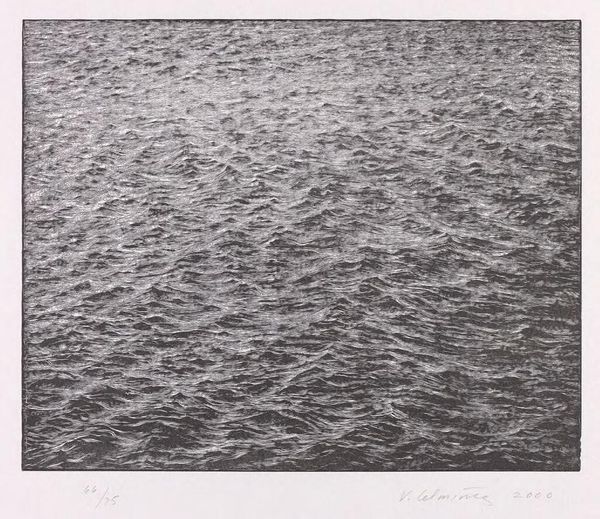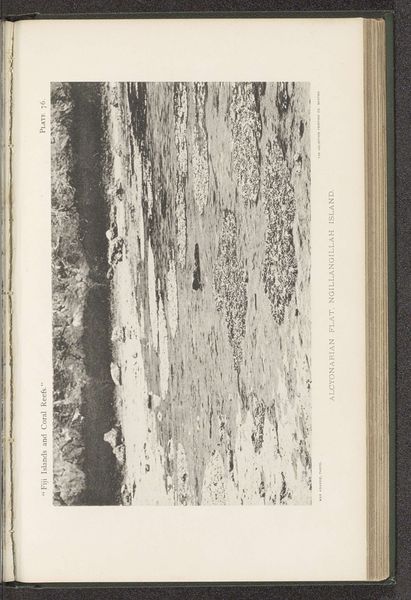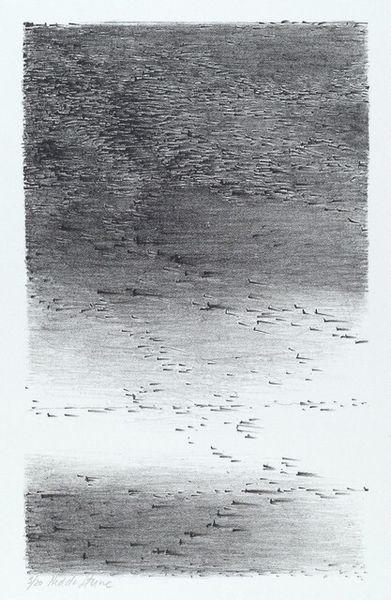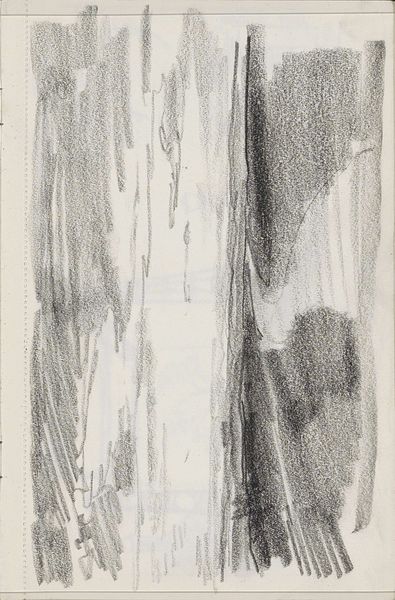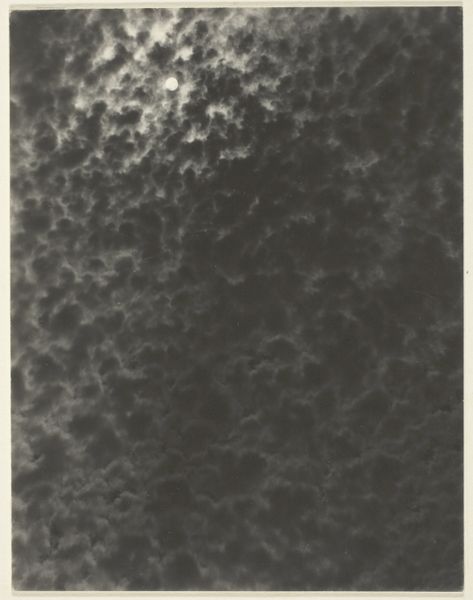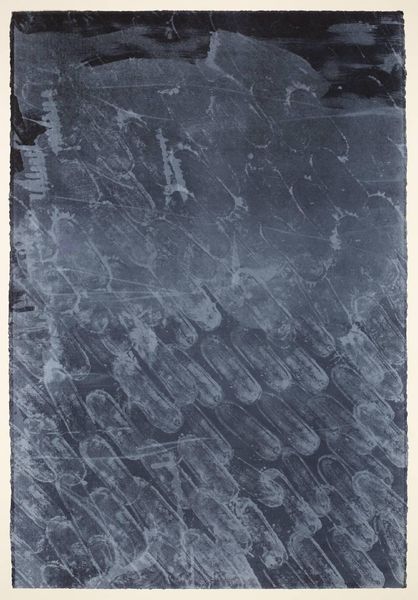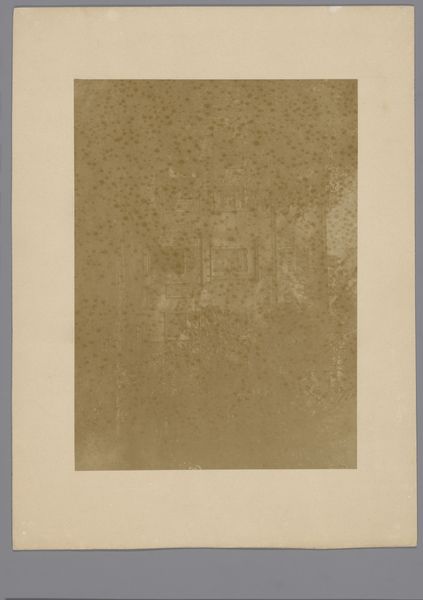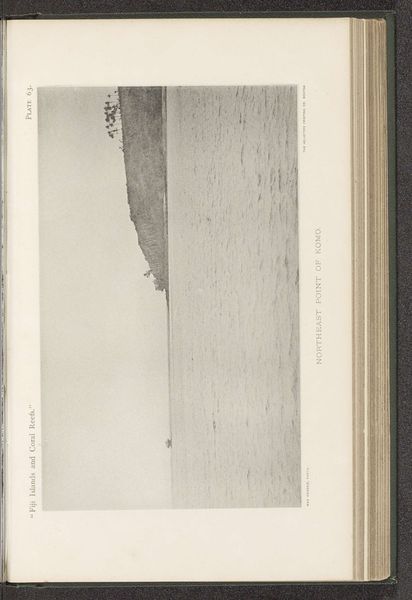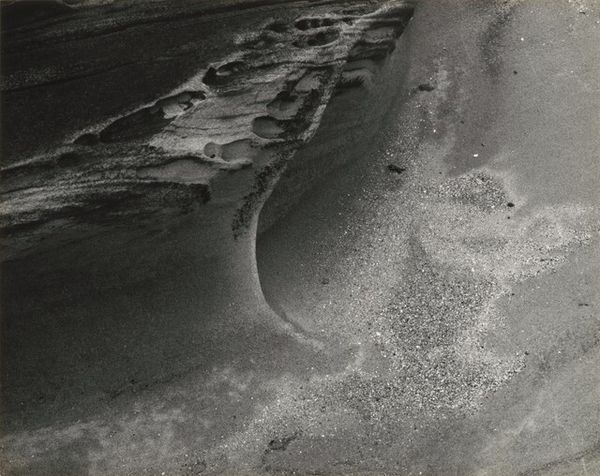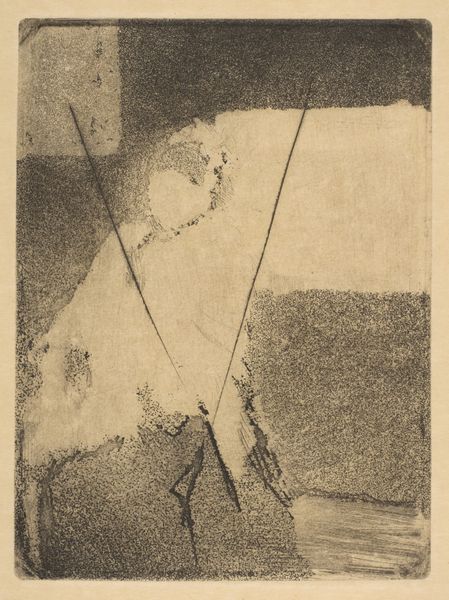
Dimensions: height 196 mm, width 85 mm, height 217 mm, width 105 mm
Copyright: Rijks Museum: Open Domain
Editor: Here we have William Boyd Post's "Water Lilies," a gelatin-silver print, possibly with watercolor, dating roughly between 1885 and 1915. There's a quiet, almost ethereal quality to it. What do you see in this piece? Curator: It’s more than just a pretty picture, isn't it? Given the historical context, Post's focus on capturing the tranquility of nature amidst a rapidly industrializing world feels like a conscious act. He seems to be almost deliberately setting up the feminine calm of these lilies in contrast to that masculinized industrial growth of the United States at the turn of the century. Don’t you think this artistic decision places nature and technology in almost oppositional gendered roles? Editor: That’s fascinating. I hadn't considered the gendered aspect of it. Do you think the photographic process itself plays a role in this contrast? Curator: Absolutely. Photography, though a product of technological advancement, was simultaneously used to document and romanticize the vanishing natural world. Post is not simply recording; he is making a statement about what is being lost, maybe making an explicit comment on this societal change, the cost of societal 'progress'. And the use of a muted palette further enhances the sense of melancholy and quiet resistance. Is it possible that he even is pushing back on how progress occurs? Editor: So it's not just about the water lilies themselves, but what they represent in a broader social context. It also reminds me a little bit about Pictorialism, as a rejection of traditional photography practices of documentation and stark realism. Curator: Precisely. These aesthetic choices are so heavily intertwined with societal concerns. He captures what might have been easy to miss, at the time. Editor: I now appreciate this on an entirely different level! Curator: I'm glad. And as artists it's so crucial for us to question that which we might otherwise overlook!
Comments
No comments
Be the first to comment and join the conversation on the ultimate creative platform.
